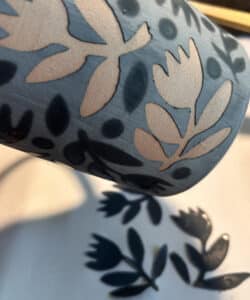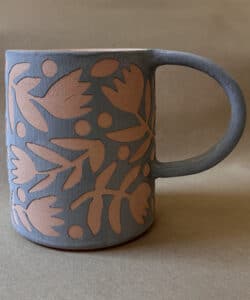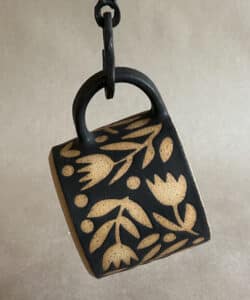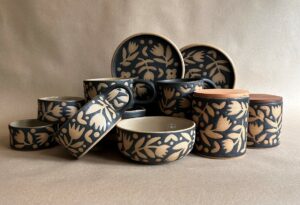From pattern to products
Discover the secrets of making a set of unique handcrafted ceramics
I am very excited to announce my partnership with Fifteen Street Studio Ceramic and Wood Design, a pottery studio that focuses on rustic, modern, and functional ceramics and wood. Jan Curran, at its head, reveals here to us the behind the scenes of her workshop.
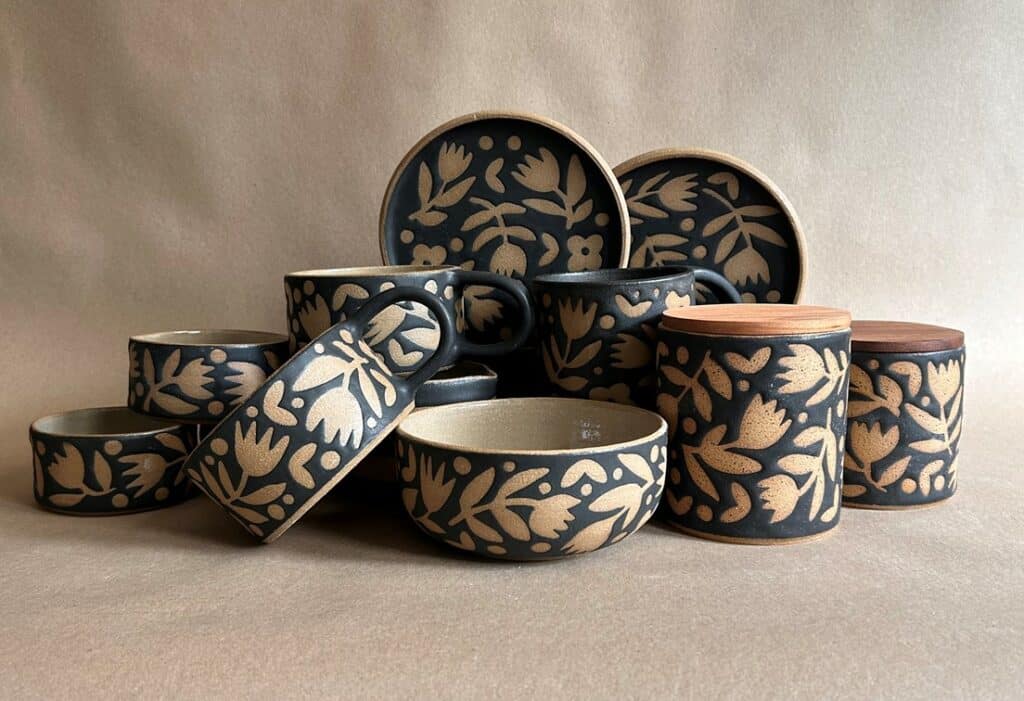
It is the long process and the craftsmanship that I invite you to discover here, from my watercolors to the ceramics created by Jan. It is a long journey that makes these creations unique, where every detail has been carefully thought out by passionate artists!
The tulip pattern
Tulips painted in watercolor
These small tulips were hand-painted in watercolor, in my way. I wanted to create a vibrant composition of scattered flowers. They are part of a mini-collection called “Viva la Vida” (in homage to Frida Kahlo). I wanted to create designs that were simple but “full of life.” It is this impression that they are not perfect, their little offset vibe that makes them unique and recognizable.
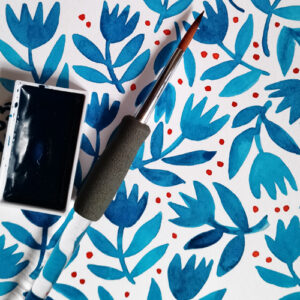
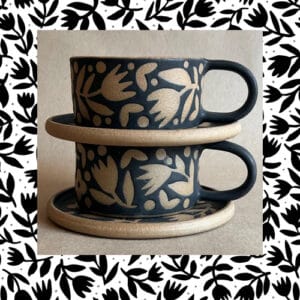
My work process
In my work process, I test my repetitions with silhouettes. I draw and download my patterns on my computor like cut-out paper puppets, then position and move them to create rhythms and harmonious areas. (This is I think what Jan calls negative space, read on, her interview is fascinating!) Then I place the details and colors, first studying the contrasts and their effects on the repetition.
This silhouetted tulip pattern has found what I call balance* even in its simple black and white version (without the added details for the colored versions). They are immediately identifiable and stand on their own. Perhaps that’s why these little tulips found their place on this beautiful ceramic set! (*The small dots around them contribute to the pattern’s balance. I’m pleased to see them again in Jan’s adaptation for her ceramics.)
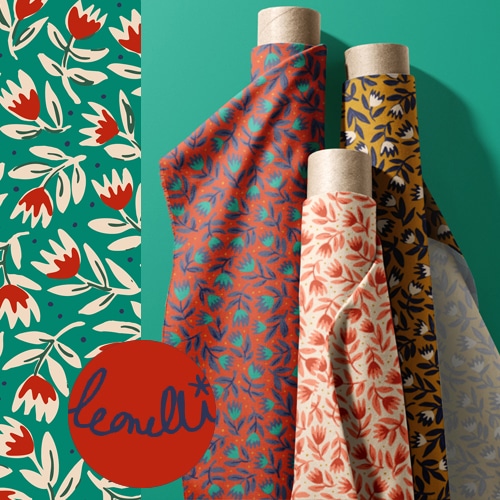
This design is available under license, in several colors and in combination with other florals and botanical patterns. Ask for the Viva La Vida collection. Fabrics are on sale in my shops. For more information or to discover my designs and collections, do not hesitate to contact me!
Now discover Jan Curran’s work for Fifteen Street Studio.
Handcrafted ceramics
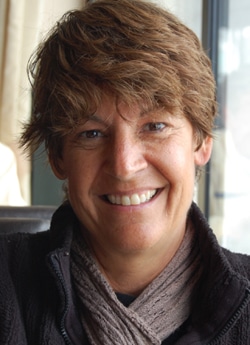
Jan Curran is the owner of Fifteen Street Studio.
I asked Jan to tell us a few words about herself and Fifteen Street Studio and to give us an insight into her working process:
Hi Jan! Can you briefly introduce yourself?
Jan: I spent most of my career at Advertising Agencies as a Creative Director/Art Director, working for companies like Leo Burnett and Foote Cone and Belding. Design was my favorite part of being an Art Director so naturally I gravitated to that as I continued my career. I became a freelancer with my own design company — Fifteen Street Studio — when I had children. My two daughters are now grown with families of their own and they are both working in the design field as well. My husband Mark, who also spent his career in advertising, is my partner in the studio and does woodworking which we offer on Etsy as well.
About FifteenStreetStudio : how would you describe your work as a ceramicist?
Jan: I consider myself a maker above all else. In addition to graphic design, my interests have included letterpress, photography, wood cutting with a laser, sewing, knitting, weaving, and now ceramics. I’ve only been throwing on a wheel for a couple of years and I’m mostly self taught after a couple of classes. Ceramics is very difficult to master and I am always challenged by the art of creating a form out of clay.
You chose my tulip design as decoration; can you explain how you incorporate it into your work process?
Jan: Throughout my design career I have always been drawn to the idea of negative space. The idea that the blank areas between objects are maybe more important than the objects themselves. Patterns tend to utilize this idea often and this is what I loved about your tulip pattern which is a perfect application of negative space. I’m very honored to be able to apply it to my ceramics.
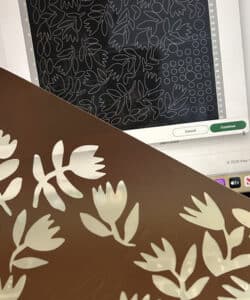
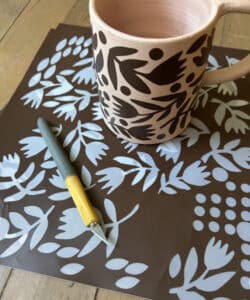
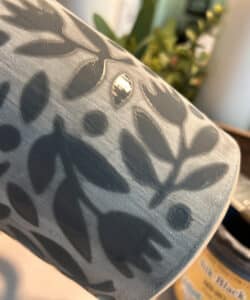
Jan: I will either design graphics in Adobe Illustrator, or in this case start with a design created by someone else and create a vector image. I have a Cricut cutter and I use that to cut out vinyl stickers of my patterns which are then applied to the bisque pottery. Glazing follows and then the removal of the stickers, leaving behind the pattern in the raw clay. It’s really gratifying to see how each piece turns out because I randomly apply the elements as my eye thinks they will balance. I used some additional elements for Andrea’s tulips to break up the contrast of dark to light but the tulips are definitely the hero in these designs, none of which are exactly the same.
